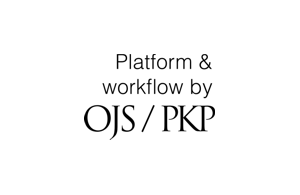Manuscript Structure
1. Title Page (First Page):
The title page should include the full title written in title case along with a short running title on the first page of the manuscript. Avoid abbreviations and formulae where possible.
Author details must not be included in the main manuscript file to ensure a double-blind review. Authors should download and complete the Authorship Letter and upload it as a separate document along with the manuscript during submission.
Abstract: Should not exceed 250 words and must be structured into Background, Objective, Methods, Results, Conclusion, and Keywords sections. In exceptional cases, up to 350 words may be accepted.
Keywords: Immediately after the abstract, authors should provide 4-10 keywords. All keywords must be spelled correctly and arranged in alphabetical order. Authors are strongly encouraged to select appropriate terms from the Medical Subject Headings (MeSH) database to ensure consistency and accurate indexing.
2. Main Text (Body):
Introduction: Clearly state the study objectives and provide concise background information, avoiding an extensive literature review or summary of results. Conclude the section by explaining the study’s rationale and significance, without adding a separate subheading.
Material and Methods: Include details of the study type, design, population, sampling techniques, data collection procedures, statistical analysis, and the study’s inclusion and exclusion criteria. Specify the study tool/ outcome measure and its authenticity with reference. Mention ethical approval from the relevant committee and confirmation of informed consent from participants. Mention trial registration number (retrospective or prospective; both are considerable). Provide registry name, registration number and date if manuscript is a randomized clinical or controlled trial.
Results: Present the findings in a clear and logical order, using both descriptive and inferential statistics where appropriate. Highlight significant results and ensure that all tables and figures are properly cited within the text rather than placed at the end of the manuscript. Do not duplicate data in graphs and tables.
Discussion: Interpret the findings and compare them with existing literature. Address the implications, study limitations, and suggestions for future research.
Conclusion: Summarize the key findings and their relevance to health and rehabilitation research. Conclusion should be presented in a short paragraph, keeping in mind the study's objective.
3. Declarations:
Conflict of interest and Competing interests: If any conflicts of interest exist, mention the statement in the manuscript. If not, mention that there is no conflict or competing interests.
Funding: Mention the funding statement if there were any funding supports. If not, mention that there was no funding source involved.
Supplementary Materials: If applicable, may be submitted alongside the main manuscript file.
4. References:
All references must follow the Vancouver style, with numbers in round brackets (e.g., (1), (2)) for in-text citations, listed in the order they appear in the text. Use abbreviations for journal titles as per the Index Medicus/Medline/PubMed/NLM Catalogue. List all authors when there are six or fewer. For seven or more list the first six followed by et al.
- Format for Journal Articles
Author(s). Title of the article. Abbreviated Journal Name. Year;Volume(Issue):Page numbers. DOI (if available).
Example: Widjanantie SC, Harinaningtyas MADK, Nusdwinuringtyas N, Burhan E, Wiyono WH. Correlation of Maximal Respiratory Pressures with Pulmonary Function in Post-COVID-19 Patients. J Mod Health Rehab Sci.2025;2(3):132.
- Format for Books
Author(s). Title of the Book. Edition (if not first). Place of publication: Publisher; Year.
Example: Kumar P, Clark M. Clinical Medicine. 10th ed. Edinburgh: Elsevier; 2020.
- Format for Book Chapters
Author(s) of chapter. Title of the chapter. In: Editor(s), editor(s). Title of the Book. Edition. Place of publication: Publisher; Year. p. Page numbers.
Example: Haroon TS. How to Plan a Scientific Study. In: Jawaid SA, Jafary MH, Zuberi SJ, editors. Medical Writing. 2nd ed. Karachi: Pakistan Medical Journalists Association; 1993. p. 1–13.
- Format for Websites
Author(s) Title of the Webpage. Website Name. Year [updated Year Month Day; cited Year Month Day]. Available from: URL
Example: World Health Organization. Rehabilitation in Health Systems. WHO. 2023 [updated 2024 Jan 15; cited 2025 Oct 6]. Available from: https://www.who.int/publications/rehabilitation
- Format for Conference Papers
Author(s). Title of the paper. In: Editor(s), editor(s). Title of the Conference Proceedings. Place of publication: Publisher; Year. p. Page numbers.
Example: Ali R, Khan S, Malik T. Innovations in Post-Stroke Rehabilitation. In: Proceedings of the 5th International Conference on Physical Therapy and Rehabilitation. Lahore: Superior University; 2024. p. 112–118.
- Format for Thesis or Dissertations
Author(s). Title of the thesis [type of thesis]. Place of publication: Institution Name; Year.
Example: Ahmed N. Prevalence of Low Back Pain Among Healthcare Workers [dissertation]. Lahore: University of Lahore; 2022.
- Format for Reports
Author(s) or Organization. Title of the Report. Place of publication: Publisher; Year. Report No. (if applicable).
Example: World Health Organization. Global Report on Disability. Geneva: WHO; 2011. - Format for Newspaper or Magazine Articles
Author(s). Title of the article. Newspaper Name. Year Month Day; Section:Page numbers.
Example: Malik M. Autonomous Hospitals: The Future of Public Health. Pulse International. 2000 Jan 15–31; p. 1–2.
















